Blame it on 2020 and all that time spent cooped up, but people from coast-to-coast are craving country-inspired interiors like never before. And it’s no wonder. Nothing feels quite as homey as spaces designed to be lived in, not simply admired. Rooms bursting with items with weather and wear will, in turn, only look better in time—and immediately put all who enter at ease. Not to be confused with the beloved modern farmhouse aesthetic, this new old-country style shirks sleek, utilitarian elements in favor of soft, inviting spaces with elegant details.
Easy enough for an old house to achieve. But what if you’re starting with a from-the-ground-up new build? That was the very question put to the architects at Historical Concepts and interior designer Barbara Westbrook when they were called upon by a pair of antiques-loving homeowners who were ready to leave the city and settle in to a life of pastoral pastimes and wide-open spaces.
Having recently purchased their dream property in South Carolina’s Low Country, the couple were eager to create an equally dreamy country home. But considering the historic property was part of a 1697 land grant from King Charles II of England, not just any home would do. “The clients are very historically minded,” says Terry Pylant of Historical Concepts, who served as lead designer on the project. “Though the original homestead had burned, it was important to them that the new house read as though it had been there all along.”
To achieve that, the team studied neighboring historic homes, plucking out elements such as scullery rooms and pergola porches, that are well-suited for a current lifestyle. Integrity of materials was also a cornerstone of the project. The 200-year-old heart pine floors, for example, came from a now-shuttered New England textile factory. The salvaged planks were installed with all the holes from their previous life still intact; then some were filled with wine corks to give them the essence of an early-19th-century structure.
The same soulful touches can also be found in the numerous well-appointed antiques Barbara introduced throughout. That one-two punch of patinaed architecture and design makes for a house brimming with new “old” style. Read on for ways to bring that best-of-both-worlds approach to your own home sweet home, no matter where you live.
Add Age with... Metal Roofing
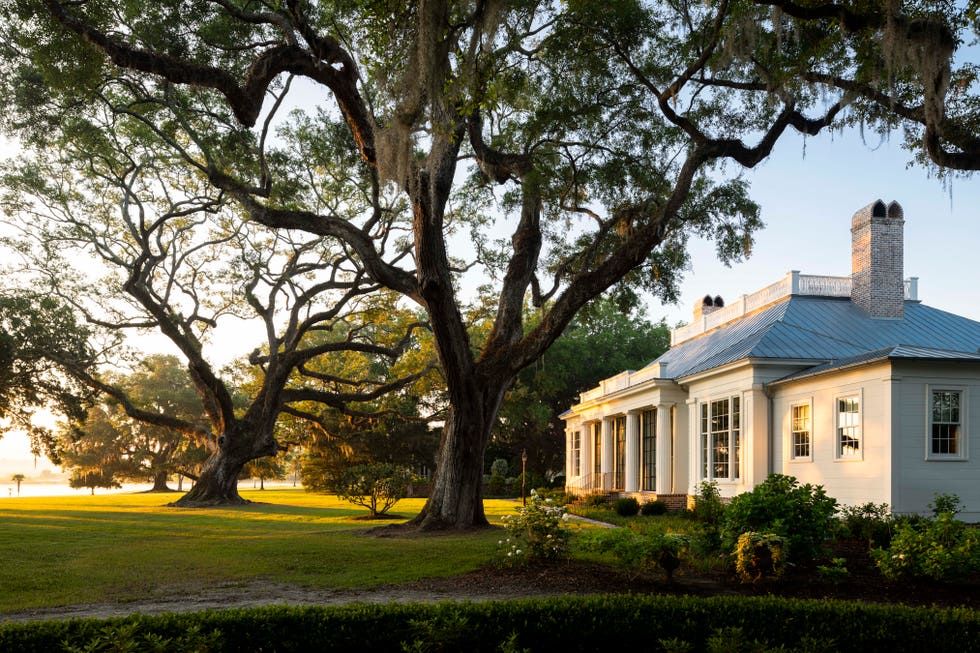
No longer merely domain of humble cabins, metal roofing is witnessing a resurgence--valued for both its durability and eye-pleasing clean-lines. Here, it makes a perfect pairing with the equally classic white exterior. It also zaps the more formal columns and cresting of any pretension.
Add Age with... a Pergola-Covered Patio
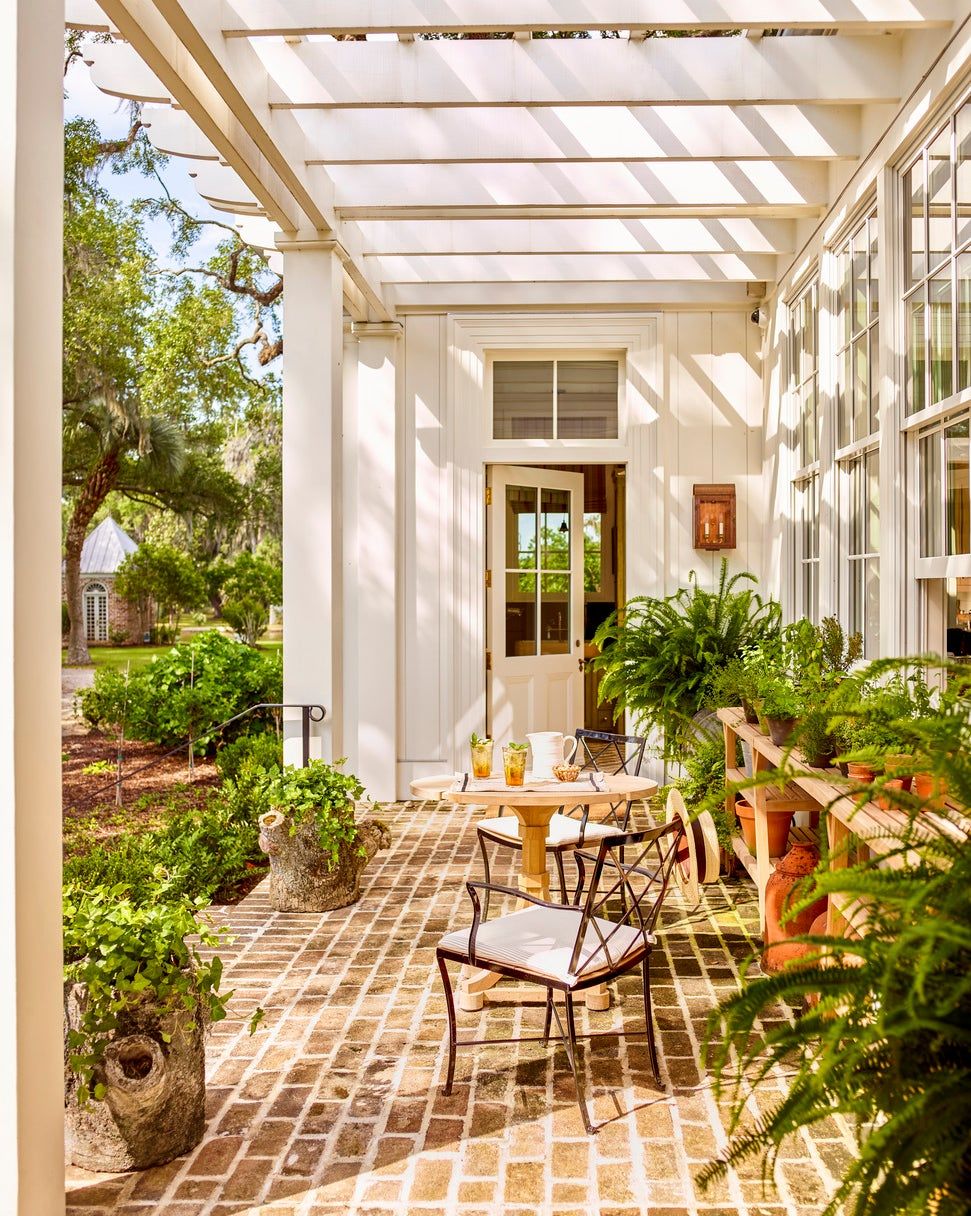
Step aside decks and covered porches, there’s a new lady in town. Or the country, rather. Pergola-covered patios (cross-beams and a sturdy open lattice are attached to the side of the home) provide the best of both worlds with a breezy area that gets just enough sunlight and just enough coverage. Here, the pergola provides both a potting station and an alfresco dining spot; the elegant architecture helps the area seems like a genuine “room.”
Add Age with... Brick Floors
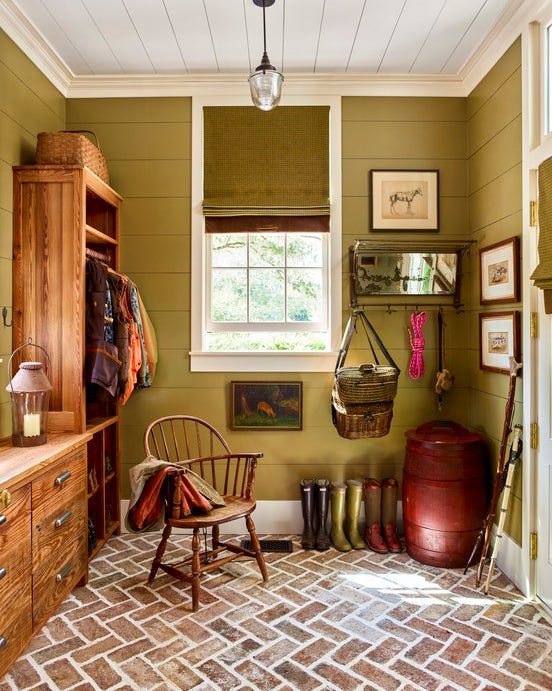
In the mudroom, handmade bricks are laid in a handsome herringbone pattern with white mortar showcasing their irregular edges. “We designed the room with materials that would have been there 100 years ago,” says lead designer Terry Pylant. “Brick is a traditional choice for high-traffic, utilitarian spaces.” Pairing the brick flooring with mossy green shiplap walls replicates the surrounding landscape.
Add Age With... Steel Windows
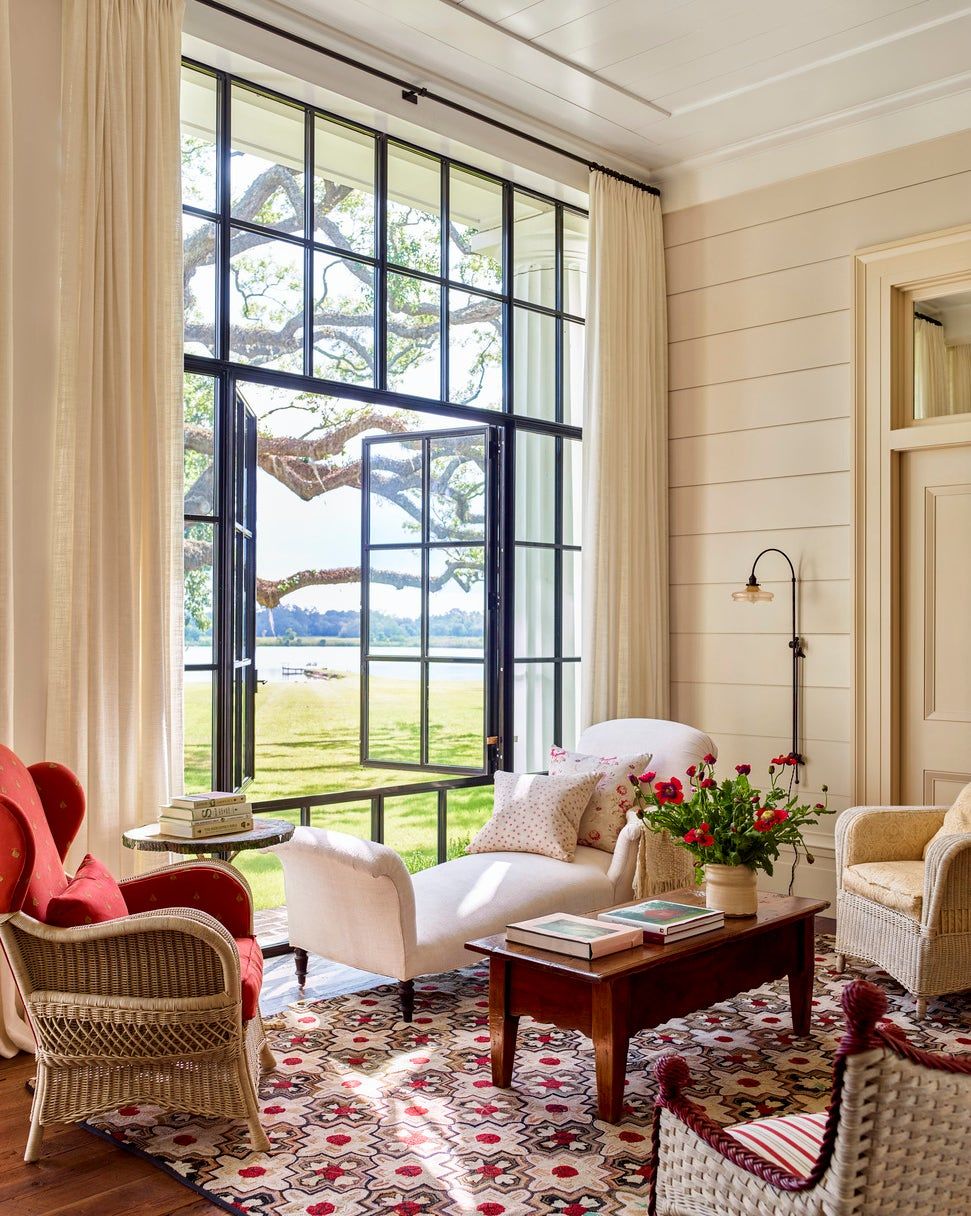
Crisp grids of steel mullions and muntins may be the windows of choice for modern farmhouses, but they’re actually nothing new. “In the 1920s and ’30s, as country homes were being updated to include newer amenities, it was common practice to enclose formerly open-air pass-throughs with steel or iron windows, creating bright, picturesque great rooms,” says Terry. For this sun-drenched living area (the windows measure almost 13 feet tall!), Barbara chose wicker armchairs (mulligansusa.com) and a chaise lounge for a throwback to the same era. The mismatch of silhouettes and colors adds soulful variety among the new pieces.
Add Age with... A Work Table Island
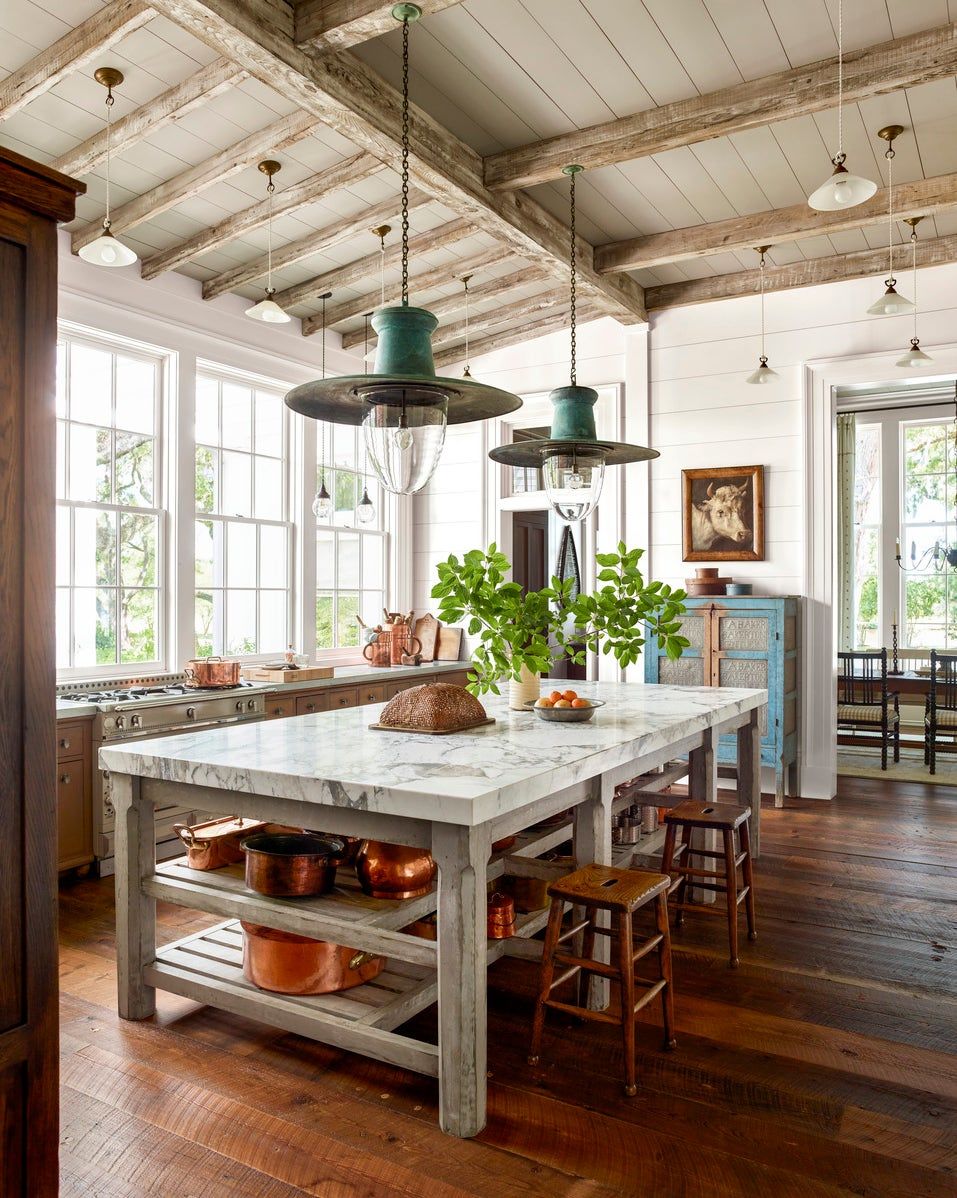
In lieu of a standard cabinetry island, Terry designed a built-in marble-top table to anchor the kitchen. “For centuries, kitchens featured a mix of freestanding storage,” says Terry. “Though newly built, the work table feels as though it could have been in a kitchen a hundred years ago.” Barbara worked with renowned craftsman Bob Christian to give the table’s base a distressed look, then topped it with a duo of bold-colored oversize pendants (rosetarlow.com) to balance its large scale. Beyond, a bank of cabinets provides storage for less sightly kitchen necessities, and a down-draft vent allows for uninterrupted counter-to-ceiling windows.
Country Comeback: Beehive Oven
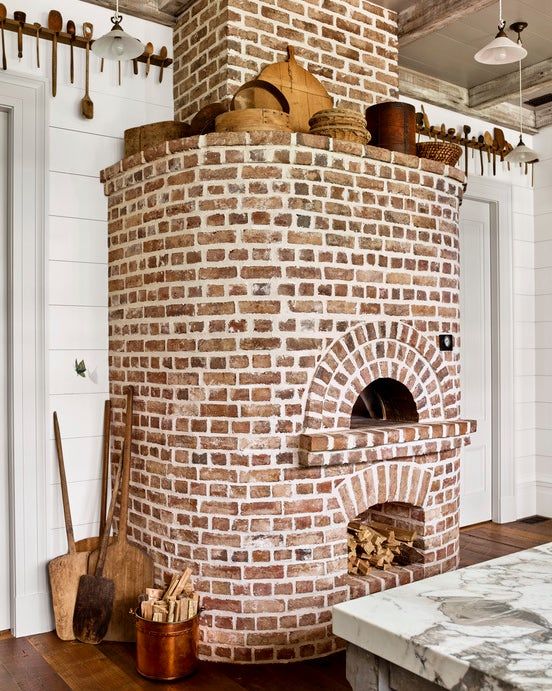
Named so because of its skep-like shape, these brick-clad cookers were housed in the open hearths of Colonial-era homes. In today’s kitchens, beehive oven–style pizza ovens like this add the charm of a fireplace with a heaping helping of modern functionality.
Add Age with... Transom Windows
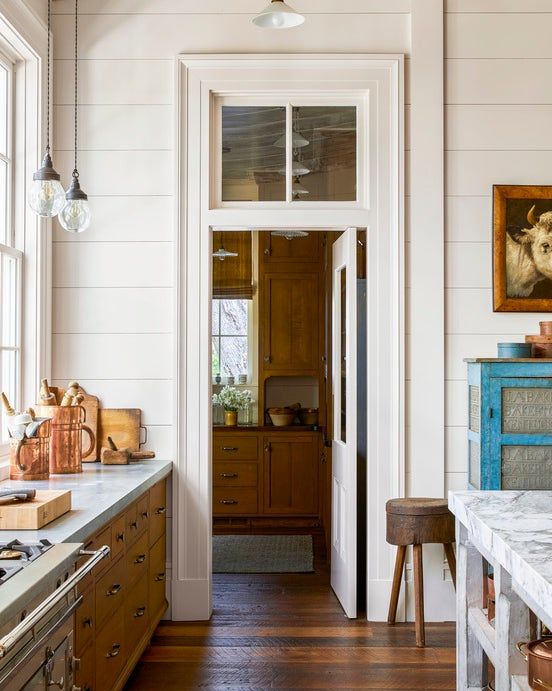
Transom windows recall bygone days, when they were integral to carrying breezes between rooms.
Add Age with... Wood Appliances
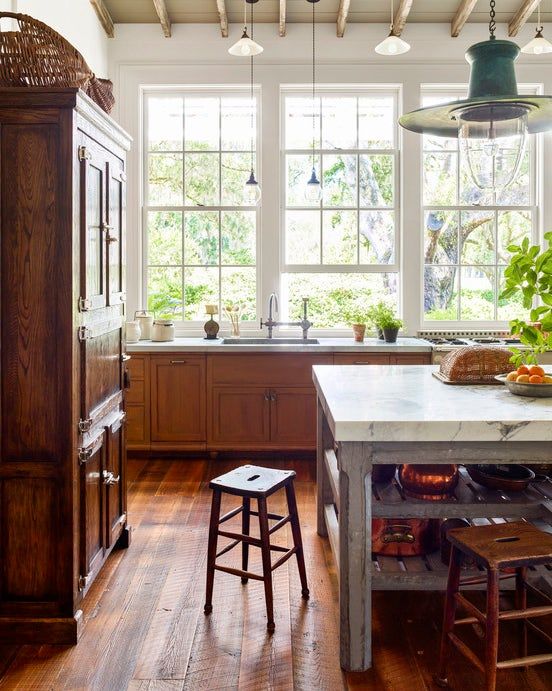
This "antique" icebox actually houses a modern refrigerator. A local craftsman stained the wood on site for a rich finish.
Country Comeback: Punched Tin
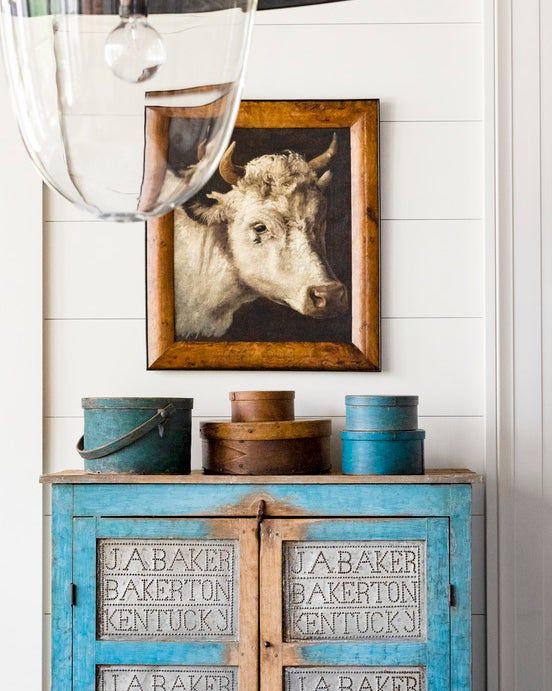
Punched (or pierced) tin once offered a way to ventilate food storage with panels that kept air flowing and bugs out. While no longer needed for that purpose, pieces such as this ca.-1850 pie safe still deliver pops of wonderfully weathered storage behind color and patinaed metal.
Add Age with... a Scullery
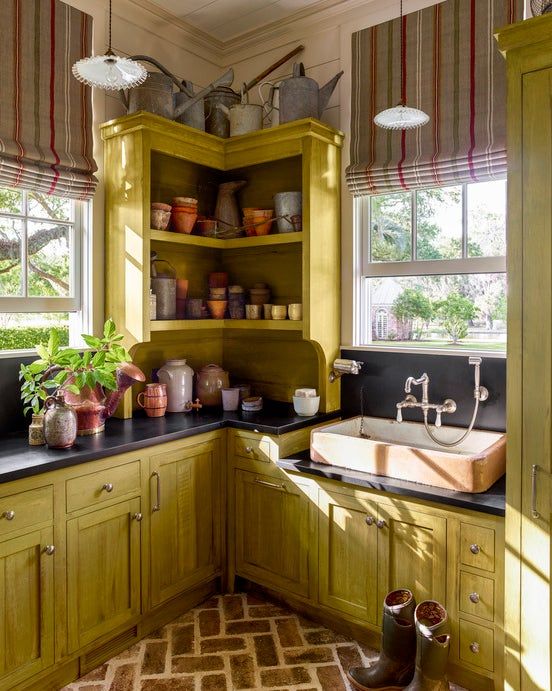
Here’s a term you don’t often hear beyond BBC dramas. Usually located just off the kitchen, scullery rooms were once a mainstay of large homes, used for kitchen prep, dishwashing, and clothes laundering. Today, they’re returning full force as flex space to tackle hobbies of all sorts. This example freshens up the concept with antiqued green cabinets and honed black granite countertops.
Add Age with... Collected Windsor Chairs
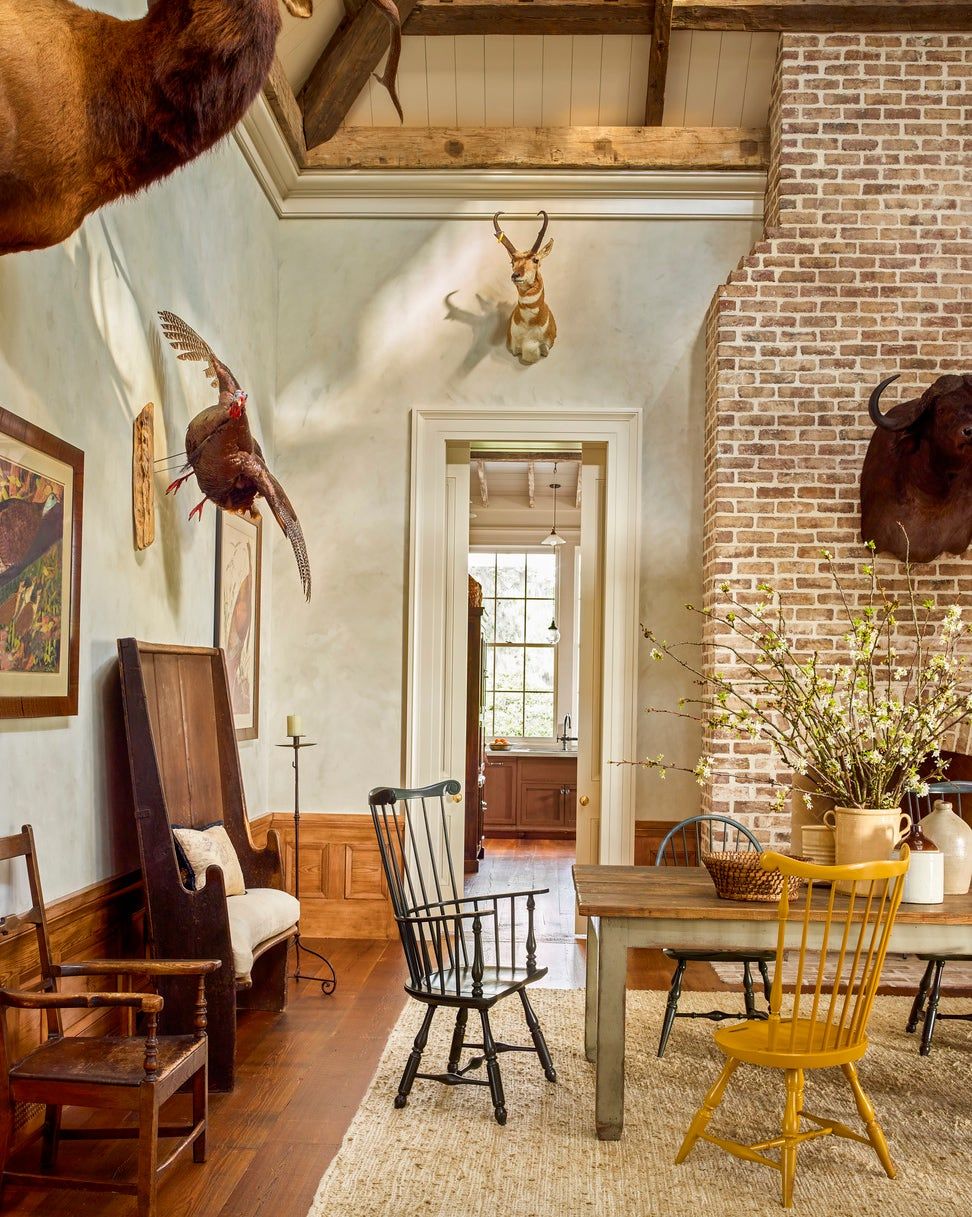
As the legend goes, King George III discovered a “stick” chair in the town of Windsor when he stopped at a local cottage to seek refuge from a storm and was so impressed with the comfortable perch, he had them made for the palace. Regardless of its origins, it was the industrious Americans who perfected the design we know now: thin spindles attached to a solid, sculpted seat. “Windsor chairs are the epitome of country elegance,” says Barbara. “It seemed only fitting to incorporate them into this gracious, laid-back dining room.” To avoid a “conference room” look, she chose handcrafted chairs (warrenchairworks.com) of varying styles and finishes to surround the antique farm table. “It appears as though you collected them from different places,” she says.
Add Age with... Cypress Paneling
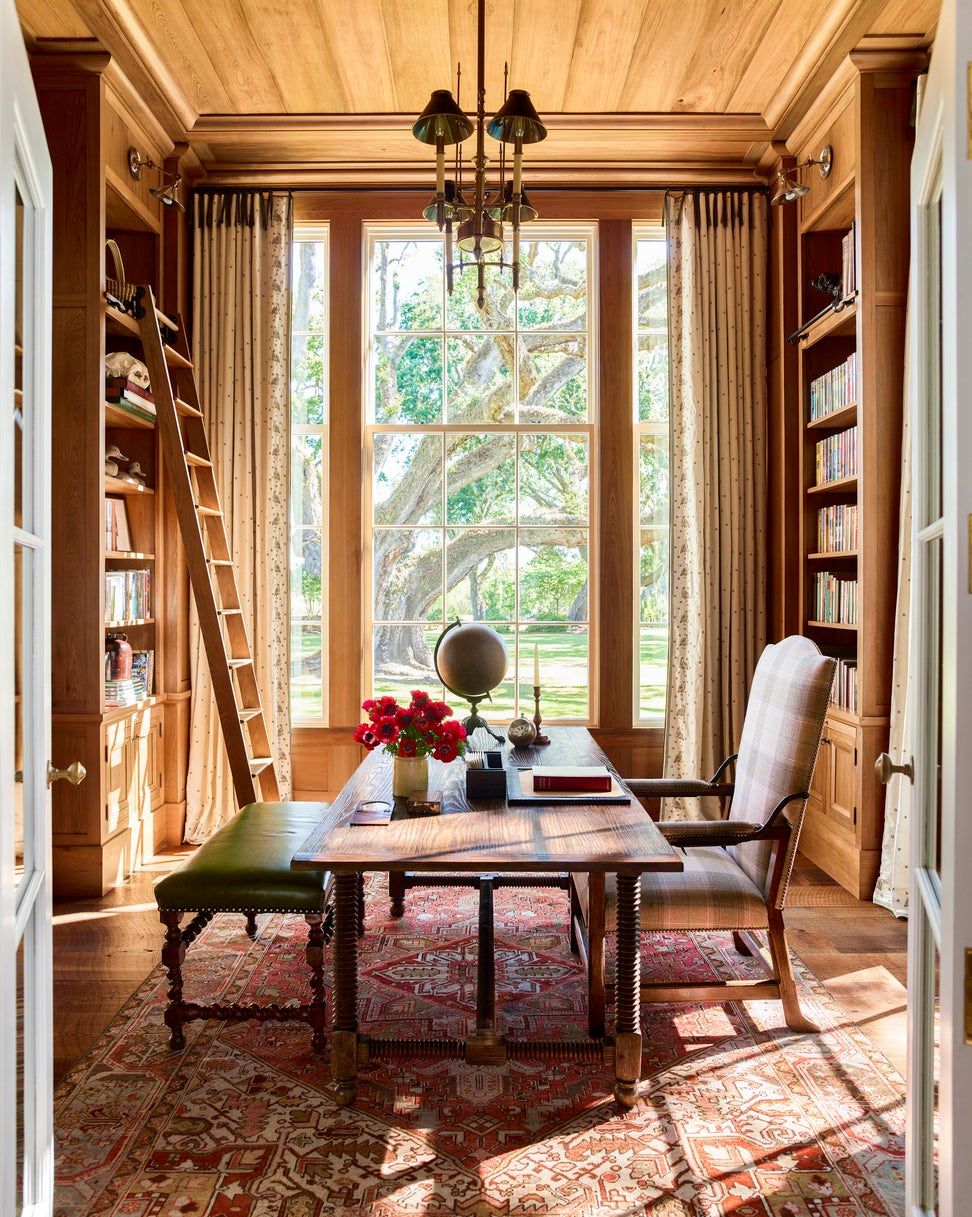
“There’s a natural calmness that comes when you step inside a room blanketed in rich wood tones,” explains Barbara of the back-in-style trend. Here, the library is clad in silky, patinaed cypress salvaged from rice ponds on the property. Barbara accentuated the room’s rustic-meets-refined poise with a spindle-leg farm table in lieu of a standard desk and embroidered curtains that lend just the right touch of softness.
Add Age with... a Salvaged Sink
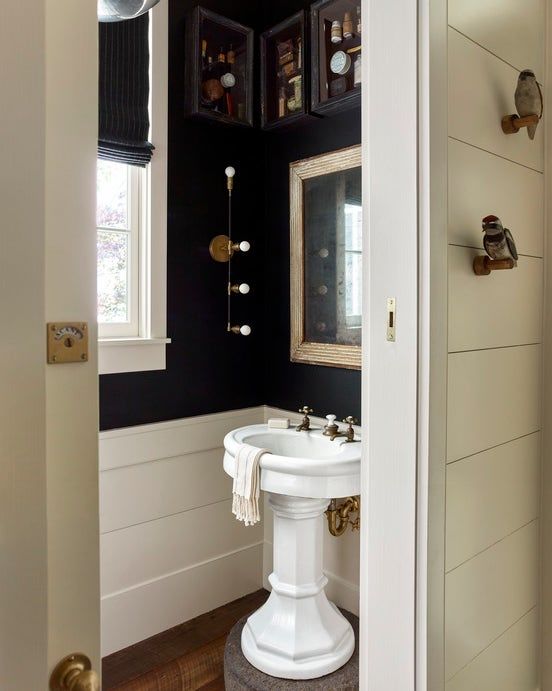
The powder room evokes an apothecary vibe with inky black walls and a gallery of shadowboxes displaying vintage shaving items. When the antique sink purchased for the space proved too short, Barbara mounted it atop an old millstone found on the property.
Add Age with... Painted Millwork
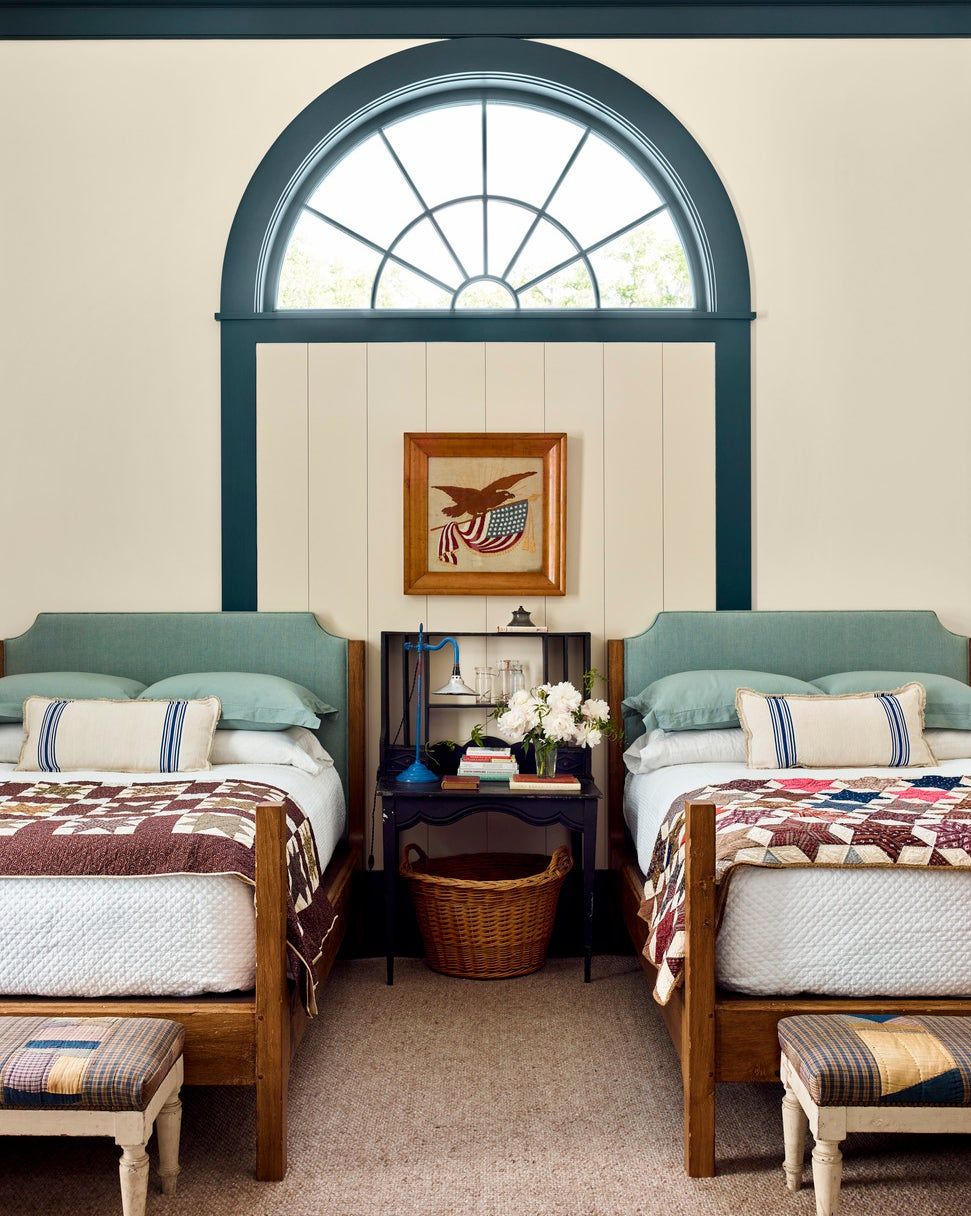
When it came to the bedrooms, Barbara took design inspiration from her time attending William & Mary in Williamsburg, VA. “Painted millwork is something you see everywhere there,” she says. Against a backdrop of an airy neutral, the stately shades of blue showcase handsome, handcrafted millwork, including the classic arched window anchoring the guest suite. The room’s triple threat of upholstered headboards, pieced quilts, and patchwork benches makes for an undeniably cozy retreat.
Add Age with...a Soaking Tub
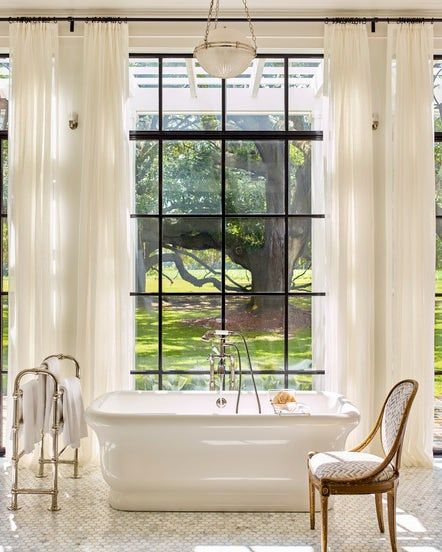
The main bath’s sprawling dimensions are a thoroughly modern indulgence, but the room retains a level of historical integrity with classic finishes such as marble hexagon tiles, nickel plumbing fixtures, and a stand-alone soaking tub. The gauzy linen curtains beautifully filter the rooms’ abundant natural light.
Country Comeback: Belt Fans
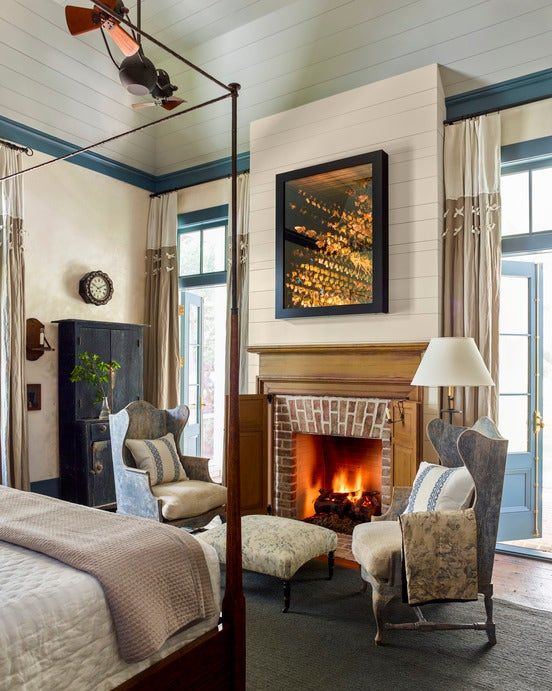
Belt fans provide all the comforts of a ceiling fan with a throwback design. Powered by pulleys, the devices were developed in the late 1800s and proved especially popular in Southern department stores and restaurants. No matter the location, they provide a sculptural element with a decidedly old-fashioned air.



![A Tranquil Jungle House That Incorporates Japanese Ethos [Video]](https://asean2.ainewslabs.com/images/22/08/b-2ennetkmmnn_t.jpg)









